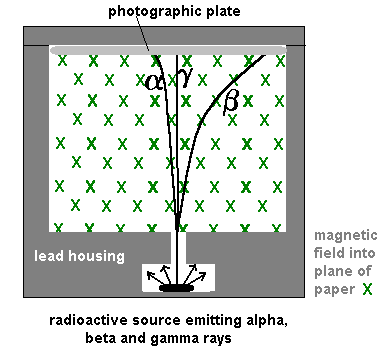Force on a moving charge All moving charges create a magnetic field. If the charge is moving at right angles to the flux lines then the field it creates interacts strongly with the fixed magnetic field and the charge experiences a maximum motor effect force. When a moving charge is placed in a magnetic field, it may experience a force.
The maximum force it experiences is when it is travelling at right angles to the flux lines. When it is travelling parallel to the flux lines the force it experiences is zero. The relationship can be determined by the sine of the angle the velocity of the particle makes with the flux lines. (When the angle is zero (parallel) then force is zero as sin 0o = 0 and it is maximum when angle is 90o sin 90o = 1) - see here The size of the force can be increased by:
You can use FLHR to check that the particles have been moved in the correct direction. Remember that the second finger represents the conventional current - this is the finger that has to point in the direction of the velocity vector of positive charge movement. If you have a negative charge it has to point in the opposite direction to the velocity vector of that particle! Note that the bigger mass of the alpha particle outweighs the bigger charge factor. This makes it change direction less than the beta particle... the force has less effect. The gamma is unaffected as it has no charge! |
Follow me...
|






